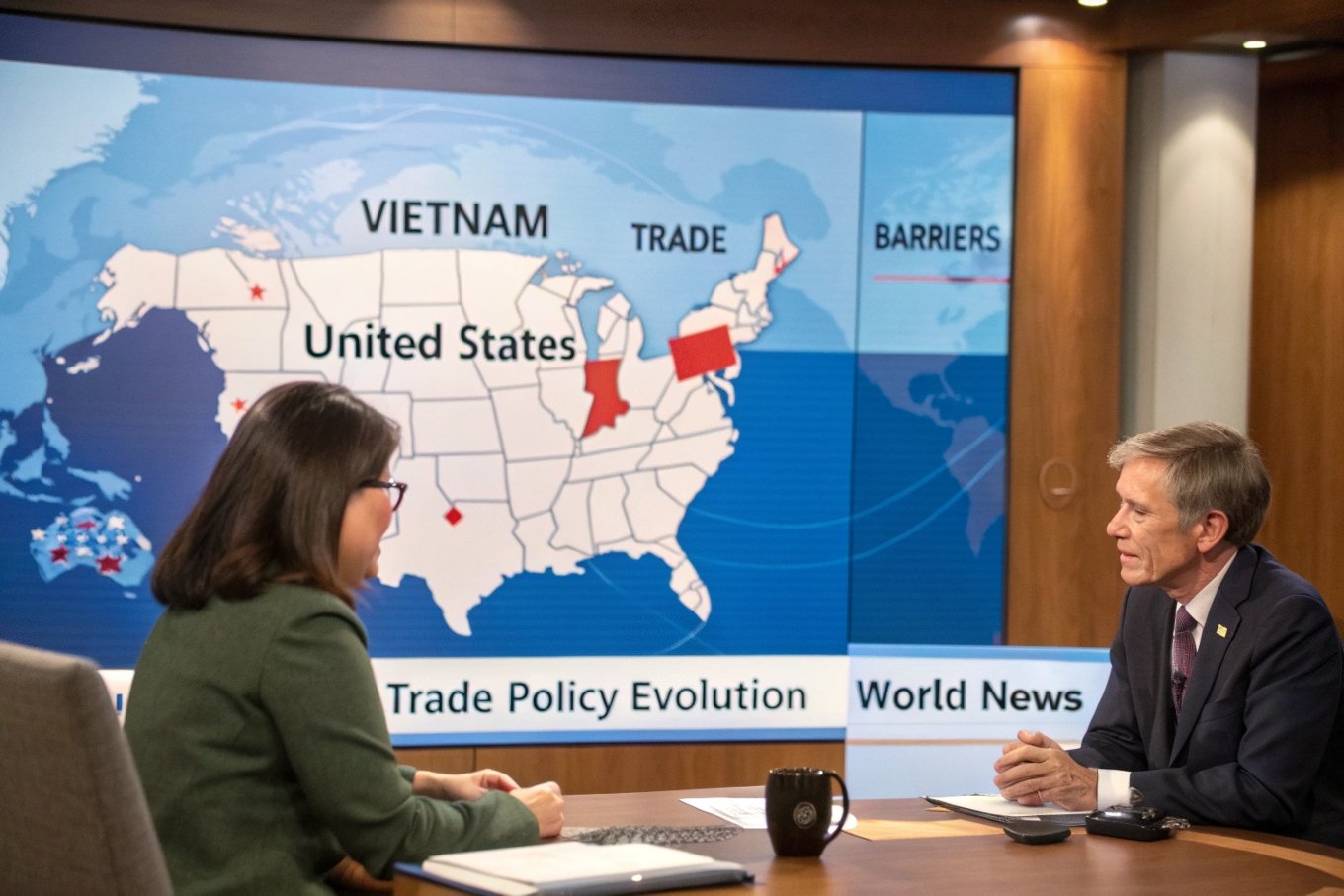
The trade relationship between the United States and Vietnam has seen significant growth in recent years, with both countries expanding their economic ties. However, as global economic conditions shift, there are questions about whether U.S. trade policies toward Vietnam will evolve or face new barriers.
The future of U.S.-Vietnam trade will be shaped by factors such as geopolitical changes, economic trends, and evolving trade policies. While current trade flows are strong, challenges and new barriers may arise, potentially altering the dynamics of the relationship.
This article explores the nature of U.S.-Vietnam trade relations, including trade deficits, the benefits of trading with Vietnam, and the perceptions of both countries towards each other.
What Is the U.S. Relationship with Vietnam Trade?
The United States and Vietnam have a growing trade relationship, which has flourished since the normalization of diplomatic ties in the 1990s. Over the past few decades, bilateral trade has increased significantly, with Vietnam becoming one of the U.S.’s fastest-growing trading partners in Southeast Asia.
In recent years, Vietnam has become an increasingly important supplier of goods such as electronics, textiles, and footwear to the U.S. market. However, the relationship is not without challenges, particularly concerning issues like intellectual property rights1 and market access.
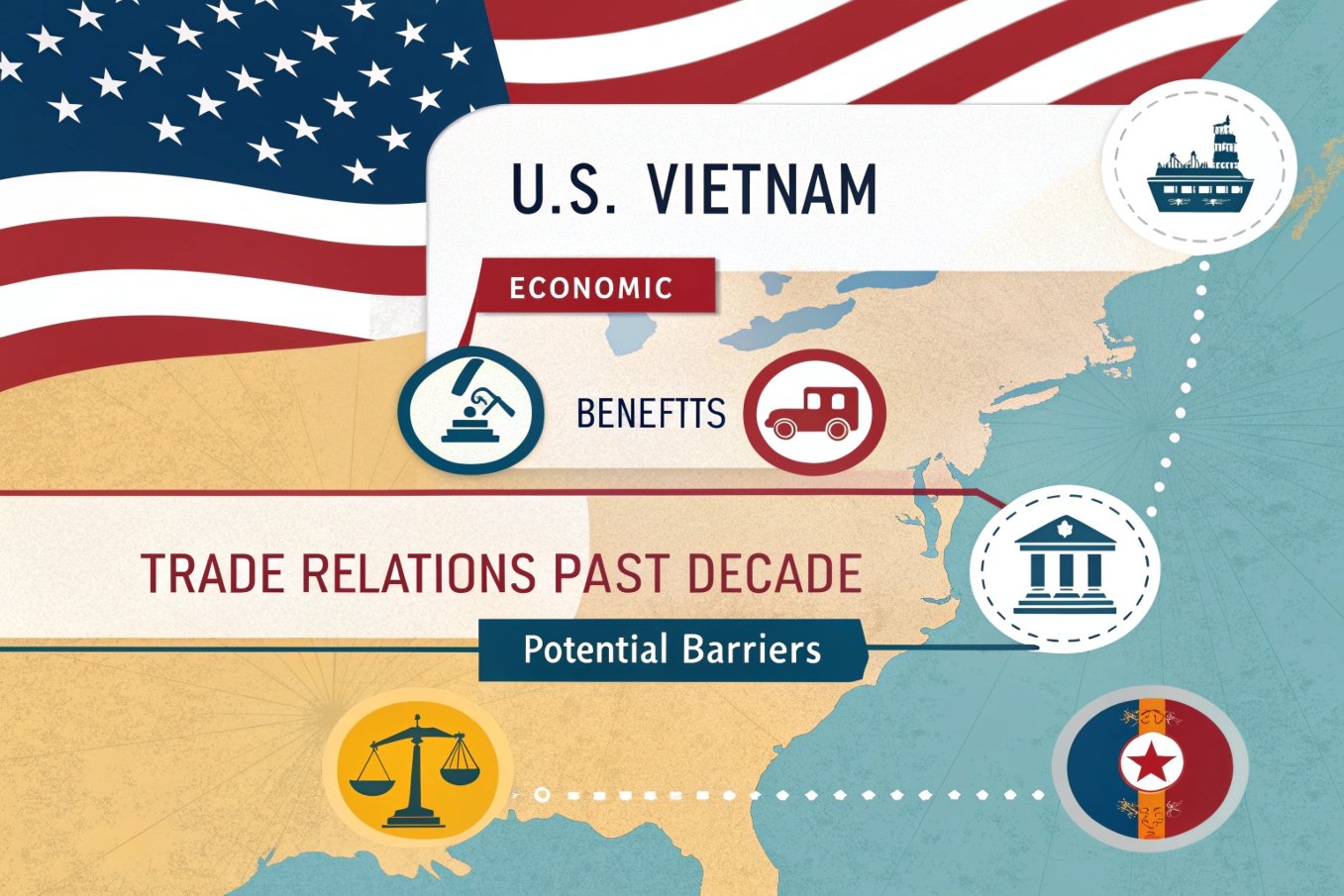
Despite these challenges, both countries have worked to strengthen their economic partnership through trade agreements and collaborations in various sectors, including technology, manufacturing, and renewable energy. Vietnam benefits from the U.S. market’s size and the trade advantages offered by programs such as the Generalized System of Preferences (GSP) and various bilateral agreements.
Key Aspects of U.S.-Vietnam Trade:
| Factor | Description |
|---|---|
| Trade Growth | Rapid expansion in the last 20 years |
| Key Export Products | Electronics, textiles, footwear, furniture |
| Trade Agreements | GSP and various bilateral agreements |
| Challenges | Intellectual property, market access, tariffs |
The future of this relationship will depend on both countries’ ability to navigate these challenges while capitalizing on mutual benefits.
Does the U.S. Have a Trade Deficit with Vietnam?
Yes, the U.S. has a significant trade deficit2 with Vietnam. This means that the value of goods imported from Vietnam to the U.S. exceeds the value of U.S. exports to Vietnam.
Vietnam’s competitive pricing, particularly in sectors such as textiles, electronics, and footwear, contributes to this trade imbalance. Additionally, the country’s role in global supply chains for various industries, including manufacturing and electronics, makes it a key exporter to the U.S. market.
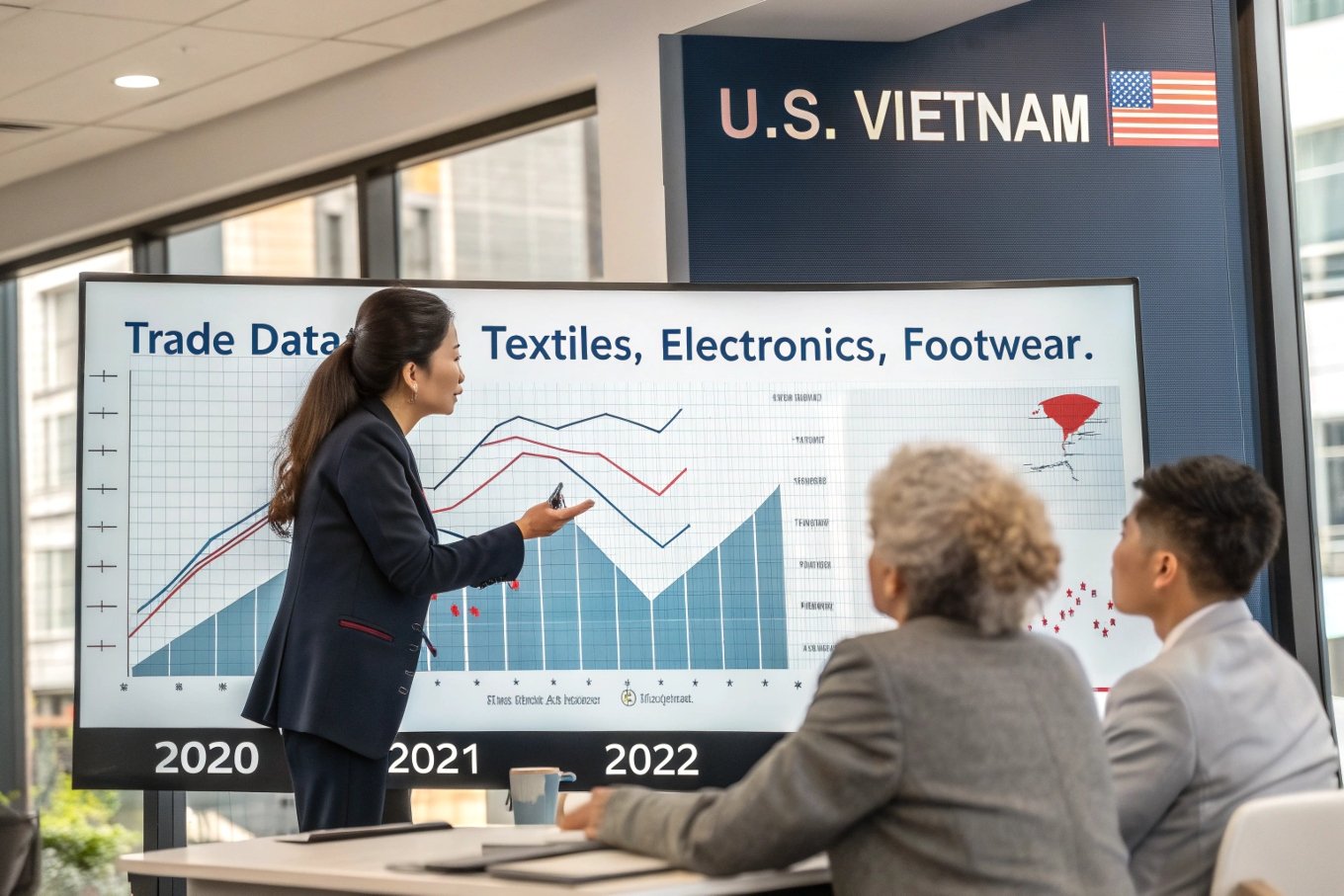
Despite the trade deficit, the U.S. benefits from the low-cost goods imported from Vietnam, which helps keep prices down for American consumers. However, the imbalance has raised concerns, with some policymakers and industries calling for actions to address the deficit through tariffs or trade restrictions.
U.S. Trade Deficit with Vietnam:
| Year | U.S. Imports from Vietnam | U.S. Exports to Vietnam | Trade Deficit |
|---|---|---|---|
| 2020 | $63.9 billion | $10.3 billion | -$53.6 billion |
| 2021 | $90.4 billion | $13.1 billion | -$77.3 billion |
| 2022 | $104.8 billion | $16.5 billion | -$88.3 billion |
The trade deficit has been a point of discussion in U.S.-Vietnam trade negotiations, but it has not fundamentally altered the overall positive trend in bilateral trade.
Is Vietnam a Good Country to Trade With?
Yes, Vietnam is considered a good country to trade with, offering several advantages for businesses seeking to expand their operations in Southeast Asia. The country’s growing economy, strategic location, and competitive labor costs make it an attractive trade partner for many industries, including electronics, textiles, and agriculture.
Vietnam’s participation in multiple trade agreements3, such as the Comprehensive and Progressive Agreement for Trans-Pacific Partnership (CPTPP) and the Regional Comprehensive Economic Partnership (RCEP), provides added access to global markets and strengthens its position as a hub for international trade.
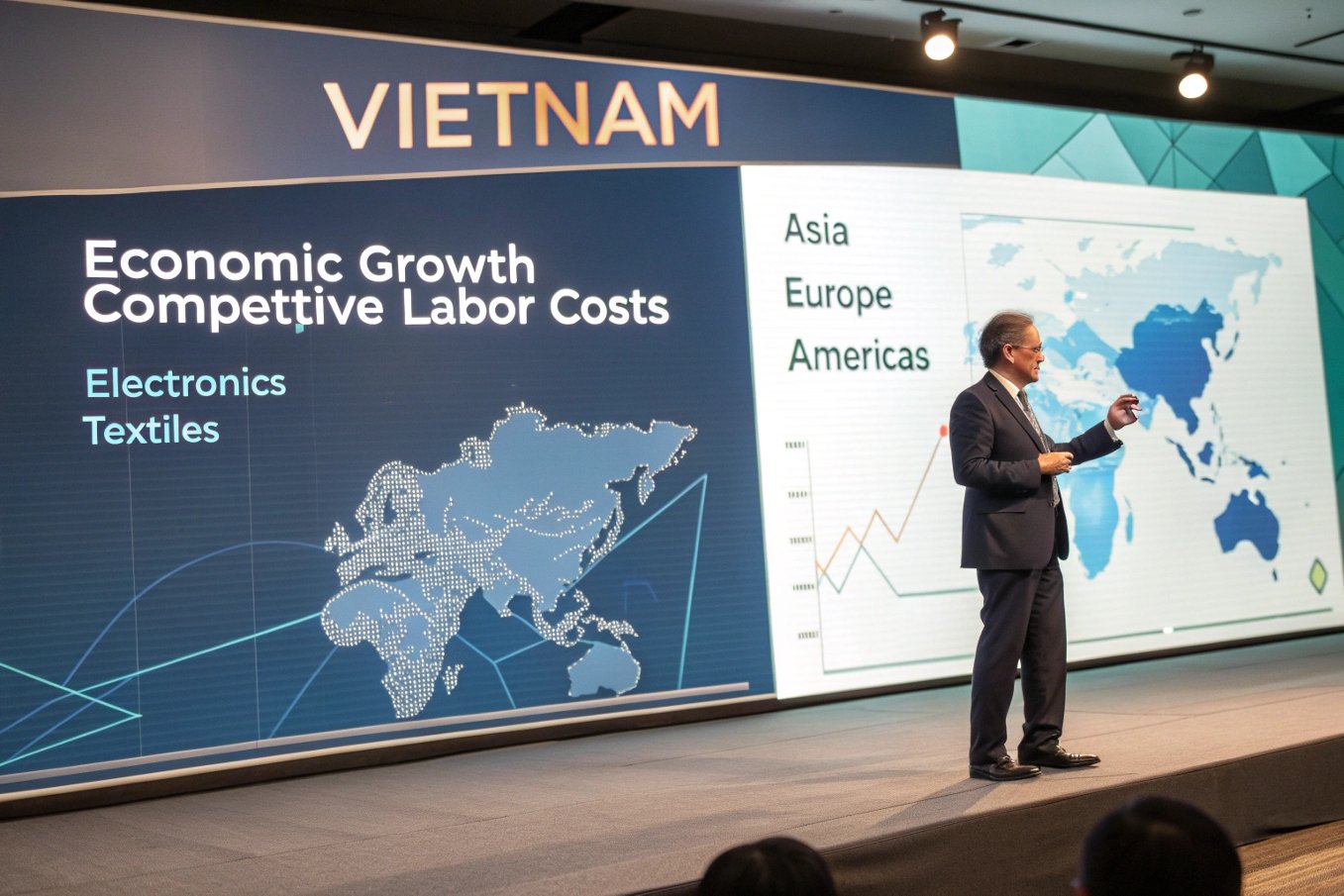
Key factors that make Vietnam an attractive trading partner include:
- Strong Economic Growth4: Vietnam has experienced steady economic growth over the past two decades, with a young, dynamic workforce and increasing consumer demand.
- Strategic Location: Vietnam’s location in Southeast Asia provides easy access to key markets in Asia, Europe, and the Americas.
- Competitive Costs: Low labor costs and a robust manufacturing base make Vietnam an attractive option for companies seeking to lower production costs.
Benefits of Trading with Vietnam:
| Advantage | Description |
|---|---|
| Strong Economic Growth | Rapid growth, increasing consumer market |
| Strategic Location | Central position for access to global markets |
| Competitive Labor Costs | Low wages, cost-effective manufacturing |
Vietnam offers significant opportunities for international trade, particularly in sectors like electronics, textiles, and agriculture. However, businesses should be aware of the regulatory environment and work closely with local partners to navigate challenges.
What Is Vietnam’s Opinion of the United States?
Vietnam’s opinion of the United States has evolved significantly over the past few decades. Once a former adversary during the Vietnam War, the relationship between the two countries has transformed into one of cooperation and mutual benefit.
Vietnam views the United States as an important economic partner and a key player in the region’s geopolitical landscape. The country benefits from trade, investment, and security ties with the U.S. However, there are also areas of disagreement, particularly concerning human rights issues and regional security concerns.
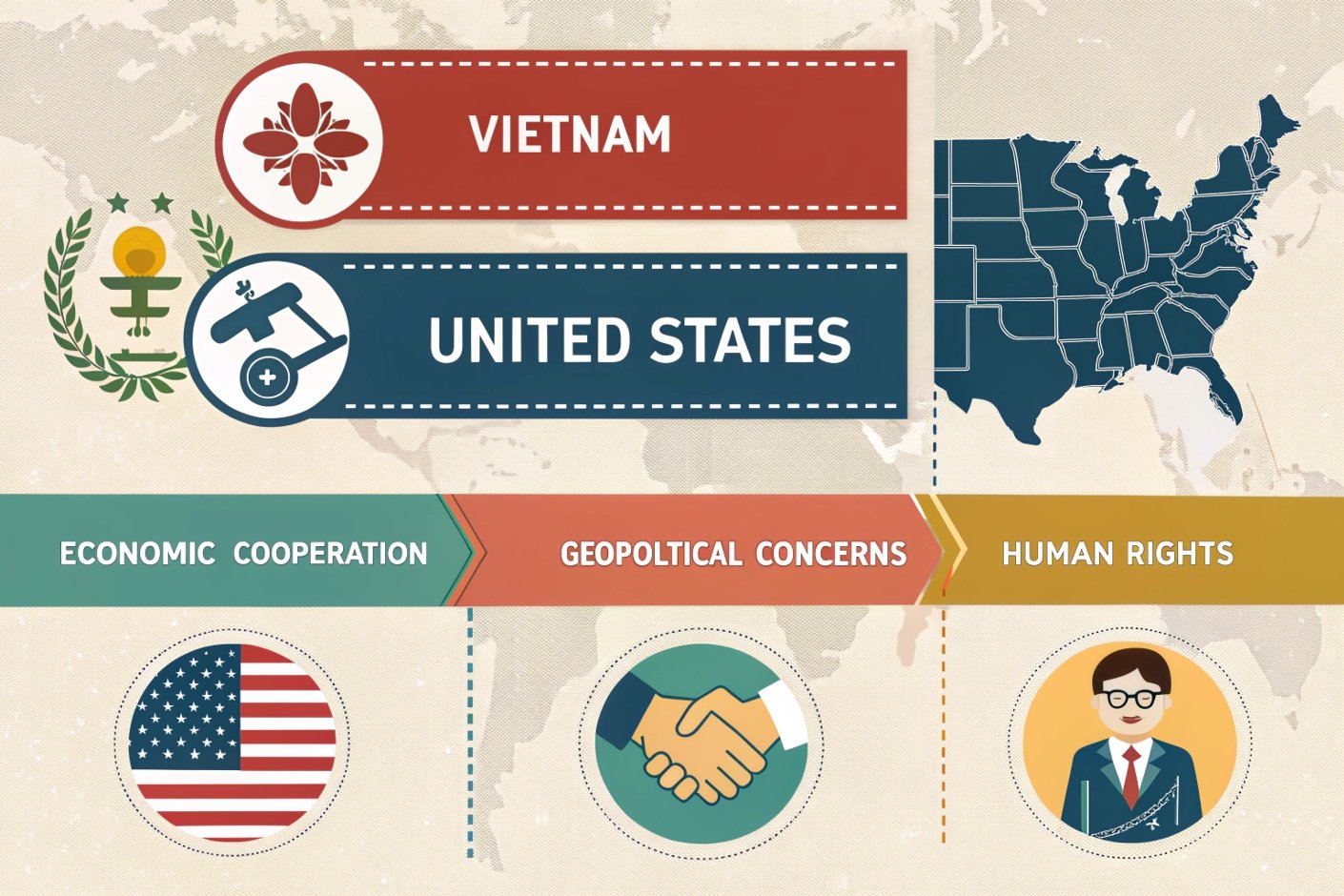
Vietnam’s perspective on the U.S. can be summarized as follows:
- Economic Cooperation: Vietnam sees the U.S. as a vital trade partner, benefiting from American demand for Vietnamese goods and U.S. investments in sectors like manufacturing and technology.
- Geopolitical Concerns: As China’s influence grows in the region, Vietnam values U.S. support for regional security and the promotion of a rules-based international order.
- Human Rights and Governance: While Vietnam benefits from its partnership with the U.S., it often faces criticism regarding its human rights record, which remains a point of contention in bilateral relations.
Vietnam’s View of the U.S.:
| Aspect | Vietnam’s Perspective |
|---|---|
| Economic Cooperation | Strong partnership in trade and investment |
| Geopolitical Concerns | Values U.S. support in balancing China’s regional influence |
| Human Rights Issues | Ongoing criticism over governance and human rights |
Despite these issues, the general tone of the relationship is positive, with both countries benefiting from increasing cooperation.
Conclusion
U.S.-Vietnam trade policies are likely to evolve as global dynamics change, but the trade relationship will continue to thrive, given the mutual benefits both countries enjoy. Vietnam’s growing economy, strategic location, and competitive labor force make it a valuable trade partner for the U.S. However, ongoing trade imbalances, geopolitical tensions, and human rights concerns may present challenges. Businesses engaged in trade with Vietnam should stay informed about evolving policies to navigate potential barriers effectively.
Learning about intellectual property rights challenges can inform businesses on how to protect their innovations in international markets. ↩
Exploring the implications of the trade deficit can help grasp its impact on the economy and consumer prices. ↩
Exploring Vietnam’s trade agreements reveals how they enhance its market access and economic growth, vital for businesses considering trade. ↩
Discovering the drivers behind Vietnam’s economic growth can help businesses identify opportunities and make informed decisions in the region. ↩

